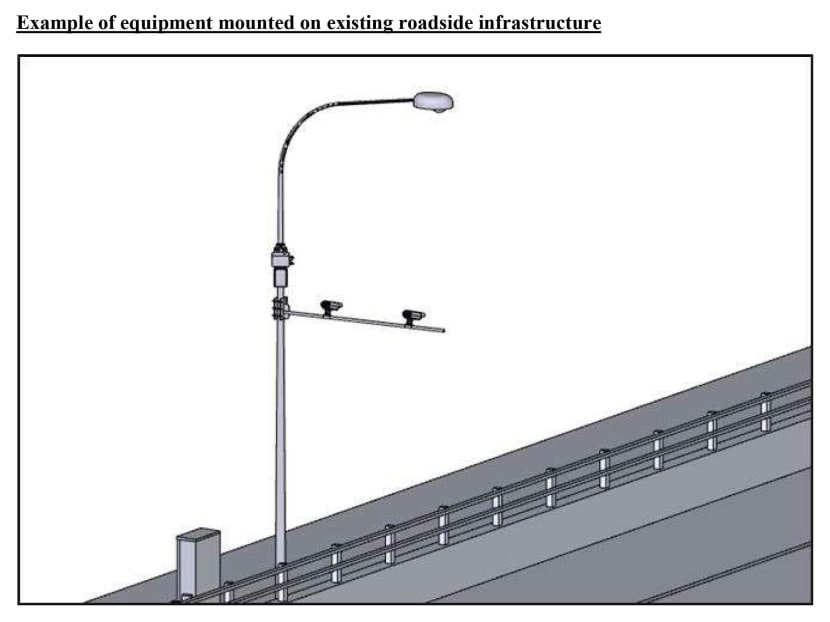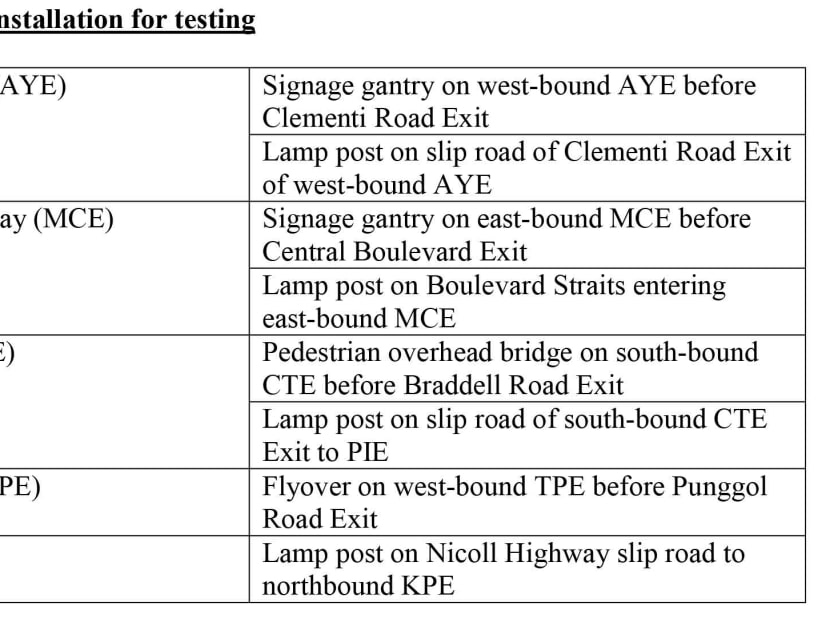LTA to trial equipment for satellite-based ERP, number plate recognition systems
SINGAPORE — Trials to test the efficacy of the equipment for the next-generation satellite-based Electronic Road Pricing (ERP) system — which charges motorists for the distance they travel on congested roads, rather than a flat fee once they enter an ERP zone — are currently being tested by the Land Transport Authority (LTA).
SINGAPORE — Trials to test the efficacy of the equipment for the next-generation satellite-based Electronic Road Pricing (ERP) system — which charges motorists for the distance they travel on congested roads, rather than a flat fee once they enter an ERP zone — are currently being tested by the Land Transport Authority (LTA).
To facilitate the trials, Dedicated Short Range Communications (DSRC) beacons will be installed at various locations along expressways and major thoroughfares from Friday (March 26) until 2019.

Illustration: LTA
The DSRC beacons, which will leverage Global Navigation Satellite System (GNSS) technology such as the Global Positioning System, will enhance positioning accuracy in Singapore's highly urbanised environment, LTA said in a statement.
Besides the installation of DSRC beacons, LTA will also test a second technology, Automatic Number Plate Recognition (ANPR) camera systems, which will help the authorities with enforcement.
The ANPR and DSRC equipment are part of LTA's future traffic management systems, the statutory board said.
"These technologies do not require heavy physical infrastructure and will be mounted on existing roadside infrastructure such as overhead bridges, overhead gantry signages, lamp posts, as well as EMAS gantries," said LTA.
For a start, ANPR and DSRC equipment will be mounted along the Ayer Rajah Expressway, Marina Coastal Expressway, Central Expressway, Tampines Expressway and Nicoll Highway.

Testing equipment will also be mounted on vehicles at localised areas such as Tuas South from April 2018, before expanding island-wide for testing.
In 2016 LTA awarded a S$556 million tender to a consortium comprising NCS and MHI Engine System Asia (MHIES-A) to develop the world's first second-generation ERP system using satellite technology.
The new system, which will be rolled out progressively from 2020, paves the way for distance-based road pricing, but the authorities stressed at the time that there are no plans yet to tweak the road pricing regime.
Instead, there will be an 18-month transition period during which both the current and new ERP systems will co-exist.
After the transition period, ERP gantries will be phased out and temporary visual cues may be put up to help motorists adapt to the new system. Under the new system, the In-Vehicle Unit (IU) will be replaced by an On-Board Unit (OBU), pre-loaded with location and tariff tables.
The new system will have island-wide coverage. In areas where the satellite coverage is weak, such as tunnels, beacons will be used to augment signal strength.
In 2008, the authorities had revealed that each three-lane ERP gantry cost S$1.5 million. LTA reiterated in 2016 that the current ERP system, which was implemented in 1998, is nearing the end of its lifespan and will become increasingly expensive and difficult to maintain.
Speaking in Parliament in 2014, then-Transport Minister Lui Tuck Yew said the annual operating cost of the system had risen by 80 per cent over the past decade.
LTA did not specify when the current trials will end.










